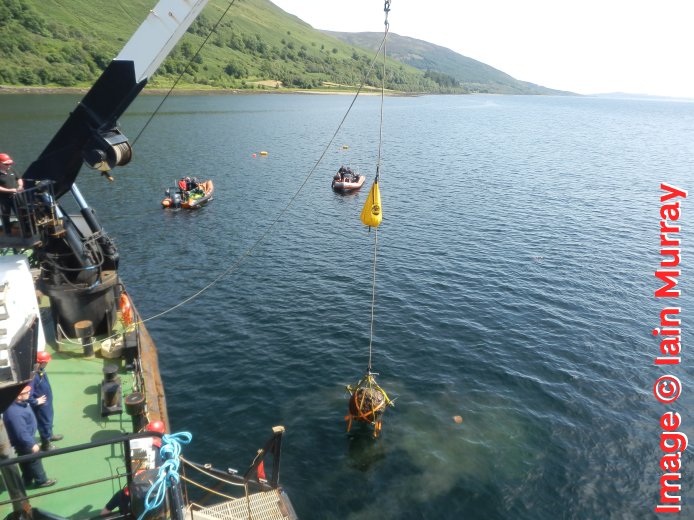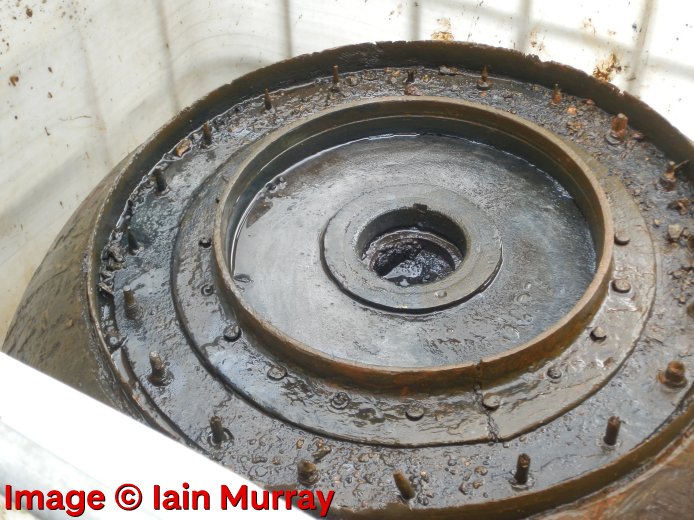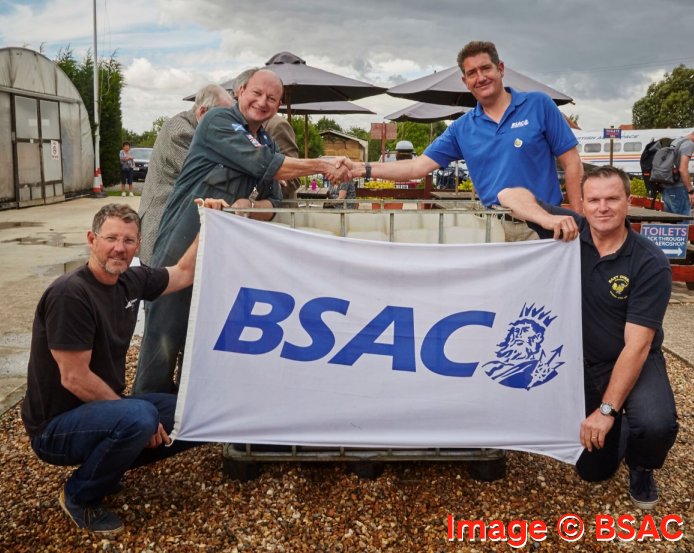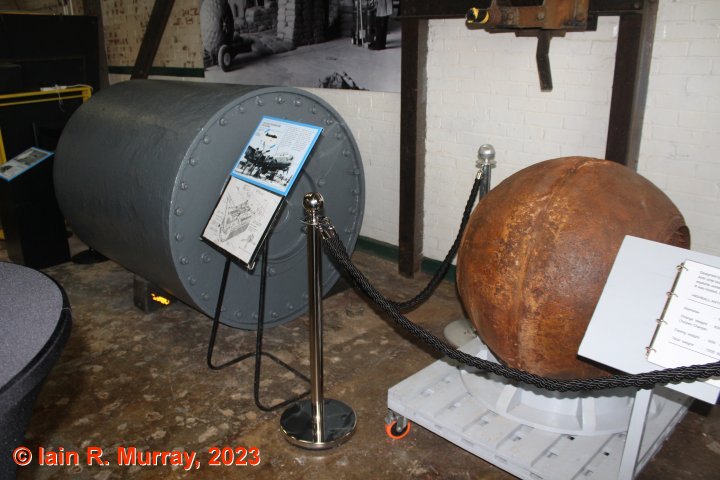Highball: the other bouncing bomb
Developed in parallel with the Upkeep dams bomb, the smaller spherical Highball was for use as an anti-ship weapon - particularly for use against the German battleship Tirpitz. The Tirpitz was anchored in the Norwegian fjords, so that it could threaten the convoy route from Britain to Russia round the North Cape. Loch Striven (off the Firth of Clyde) was used as a training area (as it has similar geography to the Norwegian fjords), with an old French battleship Courbet and later HMS Malaya being used as targets. The loch was already a secret area, being the training ground of the X-craft midget submarines (who were also after the Tirpitz).
During 1943-44, at least 100 Highballs (probably a lot more) were dropped in the loch, either for weapon testing or aircrew training purposes (these were all inert concrete-filled bombs). A diving operation carried out in 2010 successfully located some of the bombs, and in July 2017, a team from the East Cheshire Sub-Aqua Club (part of BSAC) together with a team from the Royal Navy's Northern Diving Group successfully recovered two of the bombs.
One is now on display at the de Havilland Aircraft Museum in Hertfordshire, and the other is at Brooklands Museum in Surrey, where it completes their collection of Wallis-designed bombs.
The BSAC team have created an underwater trail so that future divers can visit some of the remaining Highballs in situ.
A sonar survey of the loch was also carried out, courtesy of Aspect Surveys, Seamap and Unique Group/ GSE Rentals.
A six-page article on the recovery mission was published in the October 2017 issue of Flypast magazine.
The recovery operation was extensively covered by the media, including BBC News (plus this report which includes a video), STV News, The Herald, Royal Navy News, the Dundee Courier and the Welwyn Hatfield Times.












